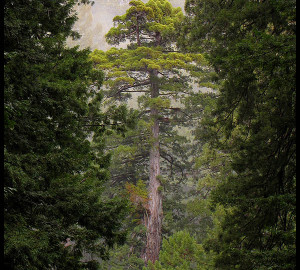Ancient Coast Redwood Symbolizes Stanford University and Namesake City
The first European exploration of the San Francisco region was led by Gaspar de Portolá in 1769 to secure land for Spain and scout sites for mission settlements. For five days of their six-month journey, the expedition camped under a tall twin coast redwood growing along the banks of what would later be named San Francisquito Creek. They named the tree El Palo Alto (tall tree).
In 1776 and 1777, the missions in San Francisco and Santa Clara were established (along with the Presidio), and the road connecting them was the El Camino Real, which passed right by El Palo Alto. Apart from some oaks, the only large tree on the 47-mile journey between the two missions was El Palo Alto, so it naturally became a famous landmark — it is currently listed as California Historical Landmark No. 2. In 1864, a railroad was completed, connecting San Francisco and San Jose and running by the tree.
Photographer Carleton Watkins, whose early images were at least partly responsible for the creation of Yosemite National Park, took the oldest known photo of El Palo Alto in 1870. Originally having twin trunks, one of the trunks fell in a storm in 1886.
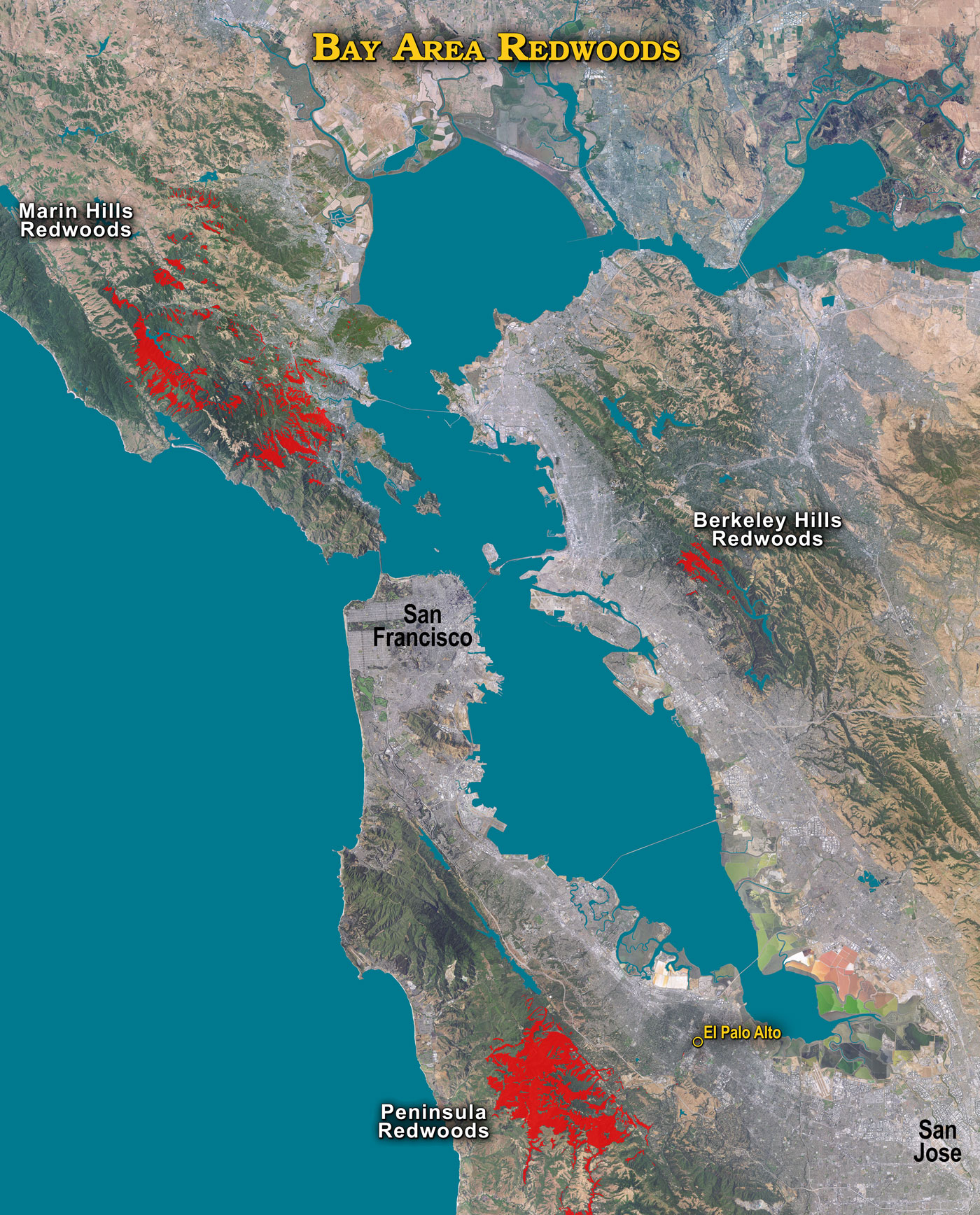
Compared to most tree species, coast redwood already has an unusual distribution in that it is limited to a 500-mile stretch of the Central and Northern California coast. In addition, there are several breaks, especially in the area surrounding San Francisco Bay. Redwoods are not native to San Francisco itself, but there are three distinct areas of redwoods nearby – The Marin Hills, Berkeley Hills, and Peninsula Redwoods. A sprinkling of redwood outliers extends many miles eastward along San Francisquito Creek, culminating with El Palo Alto. What in part limits the range of redwood is rainfall, with the drier areas being the groves along the Big Sur coast, the groves east of Napa Valley, and the Berkeley Hills Redwoods. However, the absolute driest spot where redwood naturally occurs is El Palo Alto.
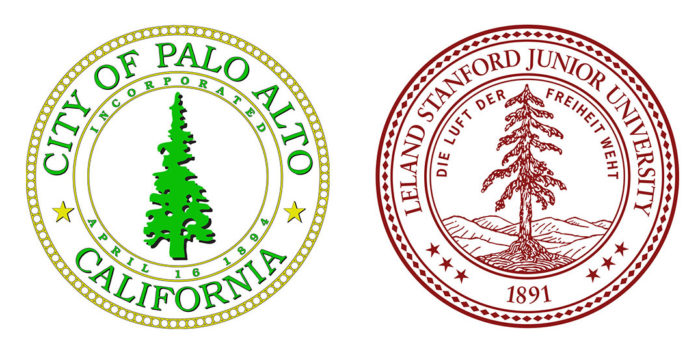
The young town of Palo Alto and Stanford University grew in the shadow of the tree, and each has incorporated the redwood into their official seals and logos. Despite recognition of the tree, the first half of the 20th century was not kind — excessive coal smoke and a water table depleted for use in orchards left the tree nearly dead.
Since then, a lot has changed – the water table has been restored; there have been radar scans that show the structure of the tree interior as well as root system; the soil has been improved through mulching; but best of all, plumbing was installed to the treetop to give the tree a daily shower.
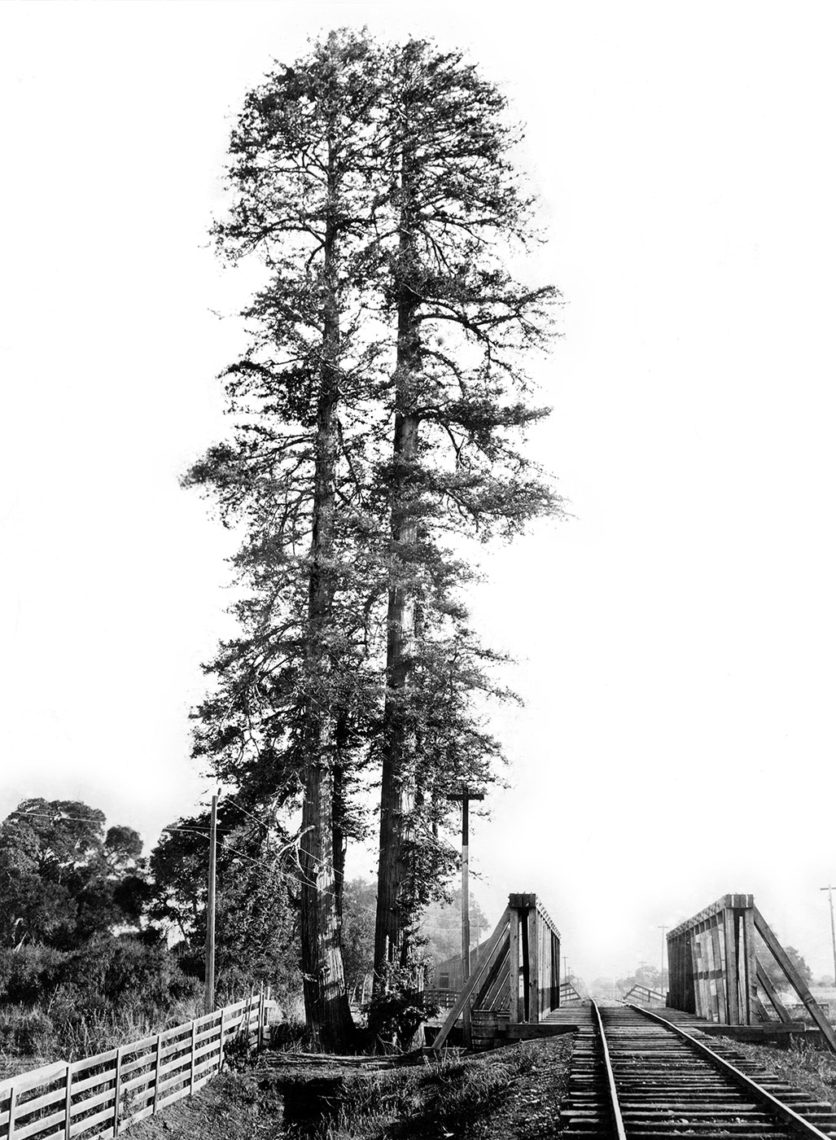
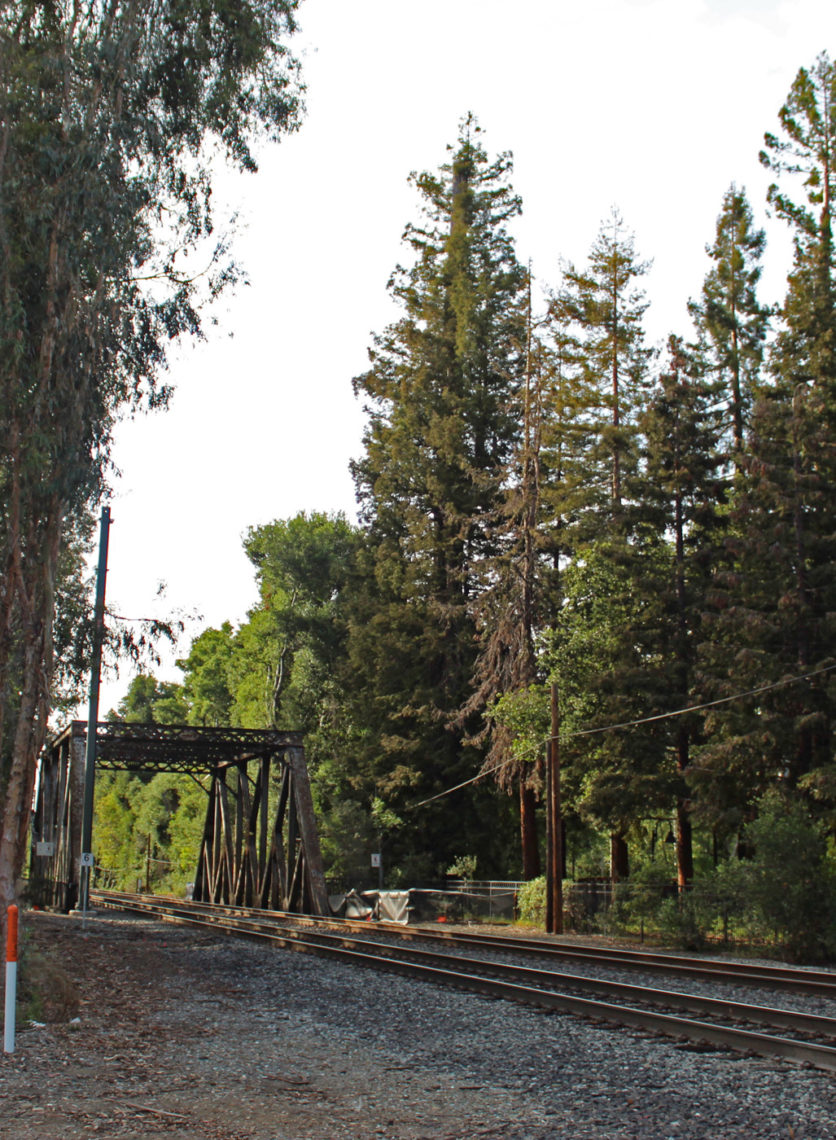
The tree currently stands in a tiny park along San Francisquito Creek, just north of Stanford University. Increment coring suggests the tree is 1,080 years old as of 2020. The park is now a miniature forest, with several tall redwoods and other trees. El Palo Alto’s namesake city has really stepped up to ensure the survival of this historic tree, as it is currently as lush as any tree could hope for.
VISIT: The El Palo Alto tree is in El Palo Alto Park, 117 Palo Alto Ave., Palo Alto, California
This feature appears in the beautiful printed edition of Redwoods magazine, a showcase of redwoods conservation stories by leading scientists and writers, as well as breathtaking photos, answers to readers’ questions, and how you can help the forest.
Join our thousands of members today for only $25, and you’ll get future editions of our Redwoods magazine.

